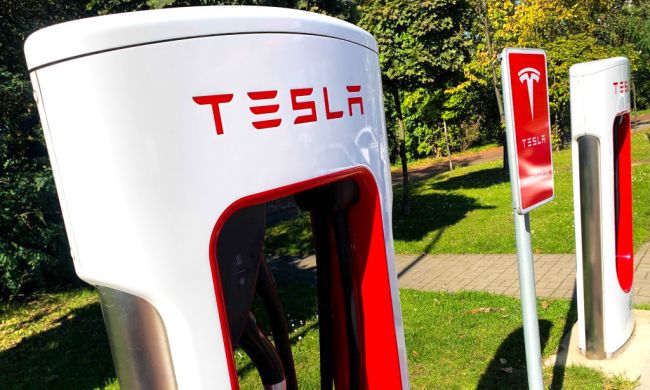Google developed Android Auto for motorists who are frustrated with their car’s native infotainment system. Like rival software Apple CarPlay, Android Auto gives drivers the option of embedding a familiar, smartphone-like interface into their touchscreen.
Further reading
Setting up Android Auto is a straightforward process, and it’s relatively easy to use. Here’s what you need to know.
How to set up Android Auto to run on the phone’s screen

Unlike Apple CarPlay, which runs only on a vehicle’s infotainment screen, Android Auto can run directly on a mobile phone in vehicles that either don’t have a screen or can’t run the software. The functionality is the same as it would be on the in-dash screen, but it allows the user to play audio over Bluetooth instead of needing to plug in. Regardless of the connection, the basic Android Auto functionality is the same. To get started:
- Make sure your device is running at least Android 5.0 (Android 6.0 is recommended)
- If you’re using Android 9 or lower, you’ll need to download the Android Auto app from the Google Play Store. Android 10 (the latest version as of writing) comes with the app built in.
Once you’ve downloaded the app and checked your phone’s operating system, you’ll need to start the app for the first time. Your phone may ask you to download updates to other apps that are used by Android Auto, like Google Maps. The app will also require you to review a safety notice and acknowledge terms and conditions, but only the first time you use Android Auto.
How to set up Android Auto to run with a USB connection

Just like running Android Auto on the device’s screen itself, using a wired USB connection requires that you have a device that is running at least Android 5.0, but there is an extra step involved in the vehicle’s settings. You’ll need to make sure that your vehicle is compatible with Android Auto (dozens are) and that it’s enabled in your vehicle. The first time you plug in your phone, you will be prompted to download the Android Auto app if you don’t have it already. If you’re running Android 10 or higher, the app is already included.
To complete the setup:
- Make sure your vehicle is running and safely parked
- Unlock your phone’s screen
- Pair your phone and car via Bluetooth
- Update any required apps, like Google Maps
- Review the safety reminder
- Turn on notifications for Android Auto
Until you disable it, Android Auto will auto-start whenever you plug your phone in.
How to update Android Auto
There’s good news for people who worry about software updates. Android Auto is easy to keep up-to-date using the Google Play Store. Since the software runs primarily on your phone, you shouldn’t need to make any major updates to your vehicle’s infotainment system. If one is needed, you’ll likely receive it via an over-the-air (OTA) software update pushed directly by the manufacturer, or as part of a normal check-up at an approved shop or dealership.
How to use Android Auto

The 2019 update brought a redesigned interface and new features to Android Auto. Previously, many consumers thought it was a somewhat bare-bones system. Switching from an Android smartphone to Android Auto felt anything but seamless. Thankfully, improvements to the design have us rethinking the system’s previous evaluation. The overhaul starts with the system’s menus. Instead of a “launcher bar” at the bottom of the screen, the updated interface has an app drawer. In fact, the drawer looks much like the one on the phone itself. There’s a new launch screen that takes the place of the home screen from previous versions. Now, when you plug in your phone, you’ll see the navigation app with a group of suggested destinations. The system is smart and will remember whether you were using Google Maps or Waze as your navigation software. Music or a podcast will start playing automatically as well. You can also disable the feature, though. On each screen of the interface, there is a home button that will return you to the app launcher. From there, you can select a different function.
Getting the most out of the app is relatively easy. All you have to do is tap the icon like you would on your phone to open the app. Remember that the app won’t close until you want to switch to a different app. The app will also close if you unplug your phone from the charger or if you turn off your car. You can use voice control to operate many of the features, making for an undeniably convenient and safe driving experience for drivers. It also offers clearly-labeled and easy-to-read icons and menus for users to browse through when they aren’t behind the wheel.
We can assure you that Google Assistant will fulfill your needs. It’s currently the top voice control system available today, so you’re bound to love what it has to offer. It has almost all of the same features in your car as it does on your smartphone, giving you the ability to ask for directions and make or take phone calls while on the road. Users can set and edit reminders and task updates throughout the day and request music to be played by title, group, or genre.
The fantastic thing about Android Auto is its high growth potential. This software is capable of more than what we see now. We’re excited to observe how the platform evolves in the years to come. Over the years, infotainment systems have drastically improved. Android is working hard to remain steady and offer software that matches vehicles’ capabilities. Each year we see more and more companies equipping their vehicles with Android Auto. If you’re looking for a new car, you’ll probably discover that Android Auto is included. For dedicated Android fans, pairing with Android Auto is a welcome experience each time they enter their car.



